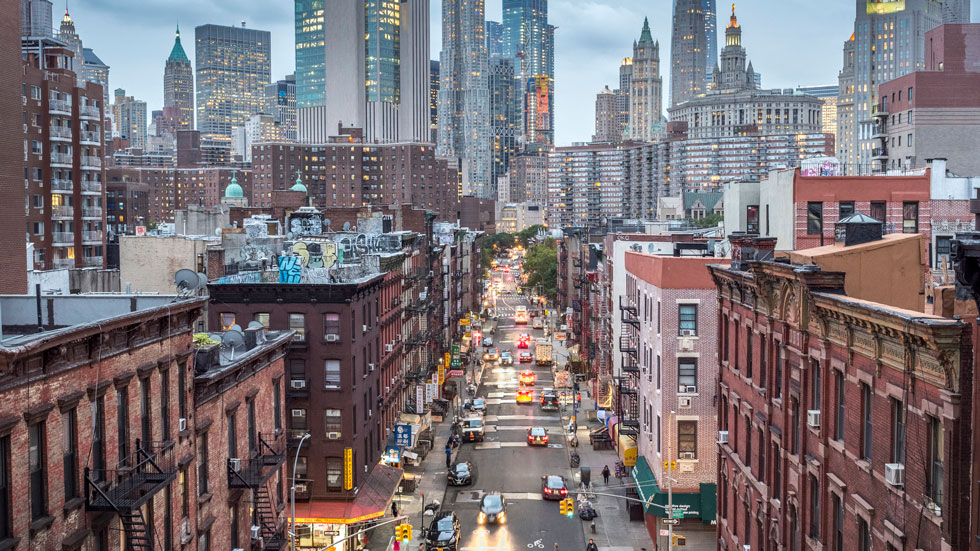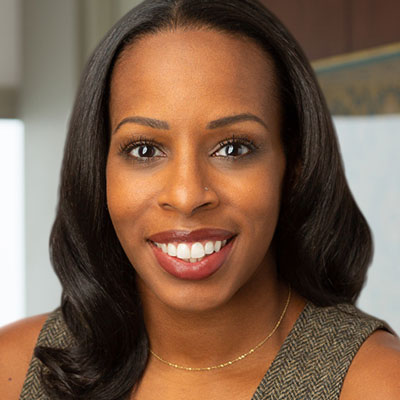Margaret Anadu, head of the Urban Investment Group (UIG) at Goldman Sachs, believes that the overlap between strong financial and social returns will continue to attract the investment needed for the nations’ cities to make real progress in overcoming social and civic challenges and emerge better equipped to support their underserved communities.
UIG has had a growing presence in impact investing for almost two decades, and Anadu sees a more significant role for it ahead as it works with the public sector and local stakeholders to bolster urban communities.
“We’re in a difficult period but there’s no doubt in my mind that our cities will recover. This is an opportunity to not build back to where we were pre-pandemic, but build back better,” Anadu says.
Established in 2001, UIG deployed more than $1.3 billion last year in community and economic development through real estate projects, social enterprises, and lending facilities for small businesses.
Anadu, who has been in UIG since 2005 and took the helm in 2016, spoke with REIT magazine about the connection between financial and social returns, the increased pressures that underserved communities are now facing, and UIG’s role in the urban recovery process.
How has UIG’s investment footprint evolved since its inception?
UIG started as an ambitious but humble effort in Goldman Sachs’ own backyard, New York City. We knew that we had the right financial tools and intellectual capital to create value in some of these underserved communities—where by working very closely with local stakeholders and the public sector, we could create opportunity not just for financial return but also in the lives of the individuals and families living there.
We’ve gone from a couple of neighborhoods in one city to cities all around the country. In my first year in the business, we invested around $20 million and we were excited about it, and proud of the impact we were having. Skip forward to the last few years, and we’re committing over $1 billion annually.
When considering a potential investment, how do you go about balancing the financial and social returns?
I think there’s this myth that profit and social impact are always at odds. The simplest example is grocery stores, the vast majority of which are for-profit entities. They generate a financial return while also creating jobs, and they provide fresh food. One of the many impact areas that we focus on is creating more access to fresh food in the underserved communities we work in. Those are profitable investments, but also deliver a strong social return.
Similarly around housing, where we do everything from 100% affordable housing, to mixed-income housing, to market-rate housing. We work with the public sector to share risk and offer that affordability, and still deliver strong returns at the same time.
One of the easiest ways to lose money is to develop and invest in projects that the community doesn’t need or want. That’s why we view community engagement as a financial risk mitigant. And because each community has different needs, and therefore there’s no perfectly replicable model for what drives social returns, in every neighborhood, in every city that we’re in we have to be locally engaged to drive the financial and social returns we are seeking.
What do you see as vital elements to a community’s success?
Housing, fresh food, and health care are all incredibly important. One of the investments we’re most proud of is the expansion of a Federally Qualified Health Center in the Bronx that serves thousands of low income individuals and families every year. We also invested in another Federally Qualified Health Center in New Orleans, which actually ended up being one of the central places for treatment when the city was hit hard by the coronavirus crisis.
We also think a lot about education of course, which is one of the clearest paths to upward economic mobility. We’re investing to create more quality educational facilities in the communities in which we work.
More recently we’ve been very focused on how we can help close the digital divide, including making sure that we can do something about the homework gap, which is especially important in this moment that requires so much virtual learning.
Has the mission of UIG become more challenging to fulfill since the start of the pandemic?
Our work is needed now more than ever. There were some communities and demographics that were hit much harder by COVID-19. The underserved communities, primarily Black and Brown communities that we invest in, were the hardest hit.
Our main message and mission over these last seven months is that we need to double down on the individuals and families in the places where we work in order to close opportunity gaps as much as possible.
Another lesson we’ve learned is that we’re going to need to be even more creative, even more nimble as we go forward because some of the public sector partners that we work shoulder-to-shoulder with are having major budget crises.
What we don’t want to happen is for projects like those that create affordable housing, new schools, and improved infrastructure which closes the digital divide, to fall to the side in the context of really difficult choices the public sector must make around spending and prioritization.
How concerned are you about small businesses in the current environment?
Small businesses, especially Black-owned businesses, are threatened by a lack of capital. Black-owned businesses are typically less connected to mainstream financial institutions to begin with. I’m very concerned that these small businesses just do not have the liquidity to weather the storm that we’re still in.
When it became very clear that the smallest of these businesses, the true mom and pop businesses, were not getting capital they needed from the large commercial banks, we focused our efforts on getting capital to community development financial institutions and other mission-driven lenders.
We are now seeing those entities getting more capital and attention, a sign that we are building back better. As those mission-driven small business lenders become stronger and get more capital, they will be able to better serve their communities.
Affordable housing is more vital than ever today. Do you expect UIG to be doing more on this front?
Affordable housing is another example of how we can build back better. We believe that safe, affordable, quality housing is the fundamental building block of communities that provide opportunity.
One of the more sobering stats that we’ve had to absorb during the crisis is that 40% of households with income less than $40,000 lost a job in March alone. If you already start off rent burdened, or severely rent burdened, a crisis like this pandemic is going to be even more painful. We’re really hoping that our public sector partners will keep prioritizing affordable housing.
UIG is a leading investor in opportunity zones. How optimistic are you that they will be able to fulfill their mission?
We’ve been really excited about our approach to opportunity zones, which is consistent with the mission of UIG to use creative financing structures and solutions to drive social and financial returns. We’ve done close to 20 opportunity zone investments, all of which have a clear intended social impact, whether that’s space for small businesses, access to fresh food, creating affordable housing, or providing capital to Black development sponsors.
So, we are excited about the work that we’ve done with Goldman Sachs and client capital. We’re also optimistic around opportunity zone reform, which we hope results in more impact across the board.
How resilient are cities to the pressures they face today?
One big factor is what additional support, if any, comes from the federal government for some of these cities where budgets have been very negatively impacted by the crisis. But regardless, I’m always going to bet on cities.
If you look at some of our most dense, dynamic, and diverse cities around the country, so many people still want to be there. I’m optimistic that desire will continue.

